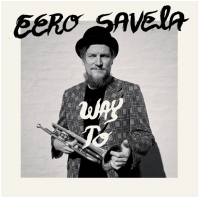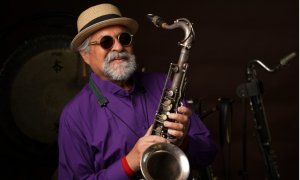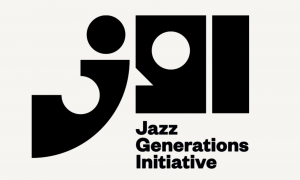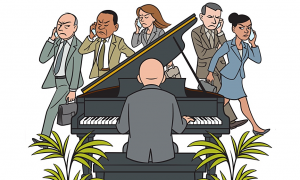On the 50th anniversary of the Bossa Nova, Jon Lusk charts its rise, from Rio's beaches to a cultural force that shaped politics and fashion
If there's one style of music that people everywhere associate with Brazil, it's Bossa Nova. And the best-loved Bossa Nova of all is “A Garota de Ipanema", better known as “The Girl From Ipanema". Astrud Gilberto's hit 1963 version was the peak of the worldwide Bossa Nova craze of that decade, but the first ripples of Bossa Nova (Portuguese for “new wave") had come out of Rio de Janeiro just over half a decade earlier. That makes 2008 Bossa Nova's 50th anniversary.
A multi-generational cast of musicians celebrated Bossa's birthday with a huge free concert on Rio's famed Ipanema Beach. Later this month, many of the same artists will bring their suave, swaying grooves to London for a similar show, partly a reprise of that event, but also in recognition of the surprising role UK music fans have played in boosting Bossa Nova's profile in recent years. Fifty Years of Bossa Nova promises a historical overview of how the style has changed over five decades, and will include luminaries such as Joo Donato, Carlos Lyra, Roberto Menescal, Marcos Valle, Celso Fonseca and Joyce, the show's curator.
“I think Bossa Nova is the greatest contribution from Brazil to world peace," says Joyce. “Because it's a very peaceful music. We saw that at the beach concert in Ipanema. We had thousands of people there and we didn't have one single incidence of violence or danger. It kind of puts you in a great mood - I really believe that it harmonises your soul."
Perhaps the 20th century's ultimate feel-good style, Bossa Nova could be described as a distillation of samba, Brazil's richly syncopated national roots music. When songwriter Antonio Carlos Jobim toned down and simplified samba's percussive elements, and introduced richer melodic and harmonic influences from jazz and classical music, he effectively invented a new genre. Jobim's lyricist Vinicius de Mores also delivered a poetic spin on the samba canao ("sung samba"), the gentle samba sub-genre.
“Samba cancao is more dark and sad, it's more related to bolero," explains Joyce. “They are like cousins in different countri es. Bossa nova is very light, very sunny, happy music. Even when they speak about sad things, the lyricists don't take themselves too seriously. So it's mostly a happy sadness."
Although some samba purists were outraged, Bossa Nova had a big impact in Brazil, beginning with the smash “Desafinado" ("Out of Tune") in July 1957, most famously performed by Joo Gilberto. A small, close-knit community of Bossa Nova songwriters soon emerged, with Jobim as its generous figurehead.
If there's one style of music that people everywhere associate with Brazil, it's Bossa Nova. And the best-loved Bossa Nova of all is “A Garota de Ipanema", better known as “The Girl From Ipanema". Astrud Gilberto's hit 1963 version was the peak of the worldwide Bossa Nova craze of that decade, but the first ripples of Bossa Nova (Portuguese for “new wave") had come out of Rio de Janeiro just over half a decade earlier. That makes 2008 Bossa Nova's 50th anniversary.
A multi-generational cast of musicians celebrated Bossa's birthday with a huge free concert on Rio's famed Ipanema Beach. Later this month, many of the same artists will bring their suave, swaying grooves to London for a similar show, partly a reprise of that event, but also in recognition of the surprising role UK music fans have played in boosting Bossa Nova's profile in recent years. Fifty Years of Bossa Nova promises a historical overview of how the style has changed over five decades, and will include luminaries such as Joo Donato, Carlos Lyra, Roberto Menescal, Marcos Valle, Celso Fonseca and Joyce, the show's curator.
“I think Bossa Nova is the greatest contribution from Brazil to world peace," says Joyce. “Because it's a very peaceful music. We saw that at the beach concert in Ipanema. We had thousands of people there and we didn't have one single incidence of violence or danger. It kind of puts you in a great mood - I really believe that it harmonises your soul."
Perhaps the 20th century's ultimate feel-good style, Bossa Nova could be described as a distillation of samba, Brazil's richly syncopated national roots music. When songwriter Antonio Carlos Jobim toned down and simplified samba's percussive elements, and introduced richer melodic and harmonic influences from jazz and classical music, he effectively invented a new genre. Jobim's lyricist Vinicius de Mores also delivered a poetic spin on the samba canao ("sung samba"), the gentle samba sub-genre.
“Samba cancao is more dark and sad, it's more related to bolero," explains Joyce. “They are like cousins in different countri es. Bossa nova is very light, very sunny, happy music. Even when they speak about sad things, the lyricists don't take themselves too seriously. So it's mostly a happy sadness."
Although some samba purists were outraged, Bossa Nova had a big impact in Brazil, beginning with the smash “Desafinado" ("Out of Tune") in July 1957, most famously performed by Joo Gilberto. A small, close-knit community of Bossa Nova songwriters soon emerged, with Jobim as its generous figurehead.
For more information contact All About Jazz.





























